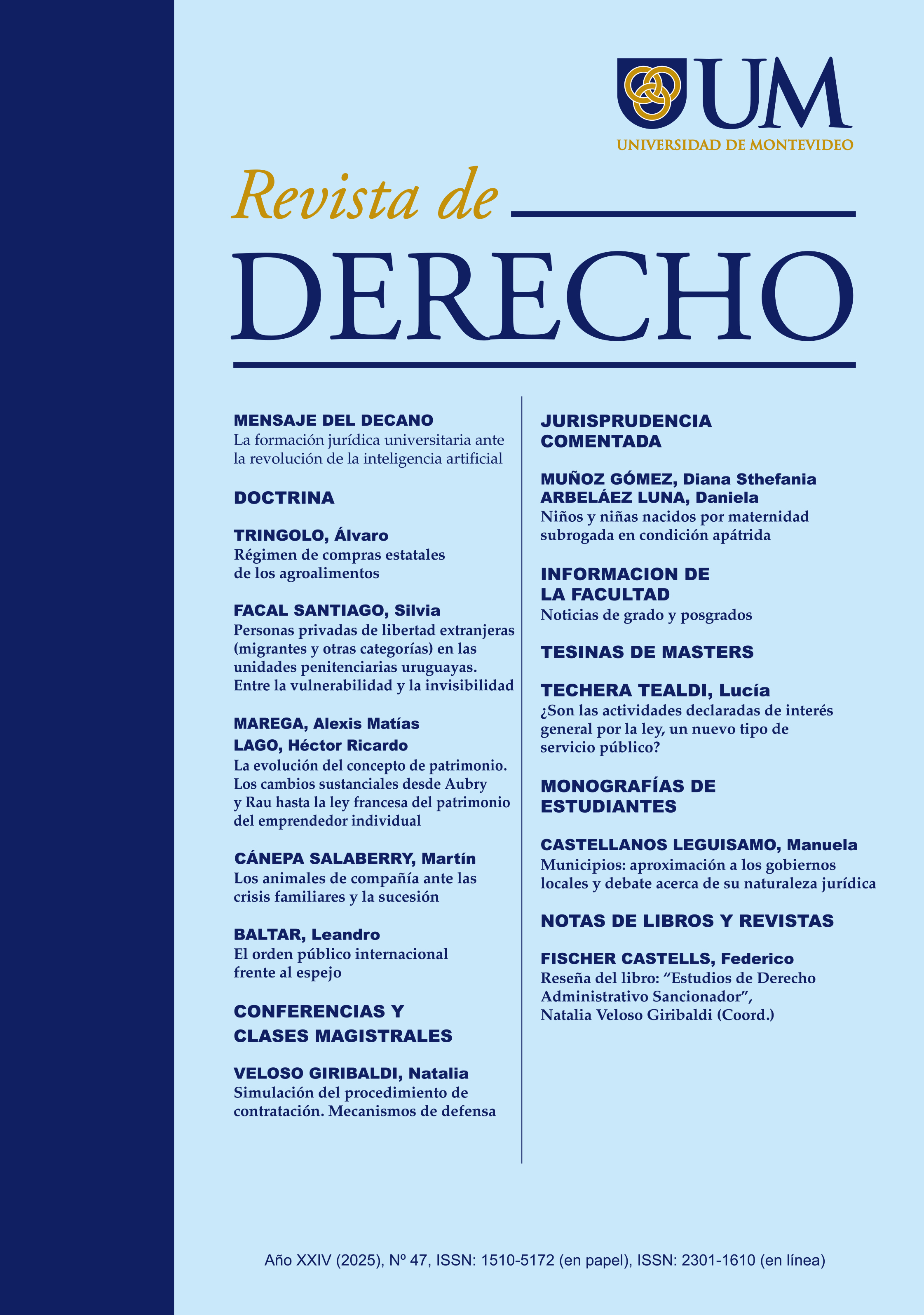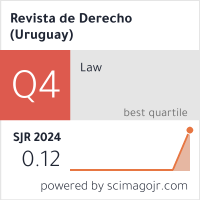Municipalities
their closeness to local governments and the debate about their legal nature
DOI:
https://doi.org/10.47274/DERUM/47.5Keywords:
Territorial decentralization, Municipalities, Legal natureAbstract
Currently, there are more than one hundred Municipalities in Uruguay. These belong to the third level of government and administration, and are essential governance bodies that enable the State to pursue the common good—on a smaller scale—within local communities. In this sense, their purpose is to meet the needs and ensure the comprehensive well-being of the community’s inhabitants, thereby establishing themselves as “governments of proximity.”
For these reasons, it is important to delve into their study, highlighting the most relevant aspects of their structure. As a starting point, decentralization will be addressed, understood in this context as a form of administrative organization focused on territorial decentralization. Subsequently, attention will turn to the organizational structure of Departmental Governments and, within them, local governing entities, namely the Municipalities.
Finally, after outlining the relevant legal framework, the analysis will focus on one of the most debated topics in the academic literature: the legal nature of Municipalities. This remains a matter of discussion, as it is still unclear whether they should be considered decentralized bodies (non-subordinate bodies with transferred legal Powers) or, rather, deconcentrated bodies (subordinate bodies within the hierarchical structure with delegated legal powers) of the Departmental Government.
Downloads
Published
How to Cite
Issue
Section
License
Copyright (c) 2025 Manuela Castellanos Leguisamo

This work is licensed under a Creative Commons Attribution 4.0 International License.






















 This work is under a
This work is under a 